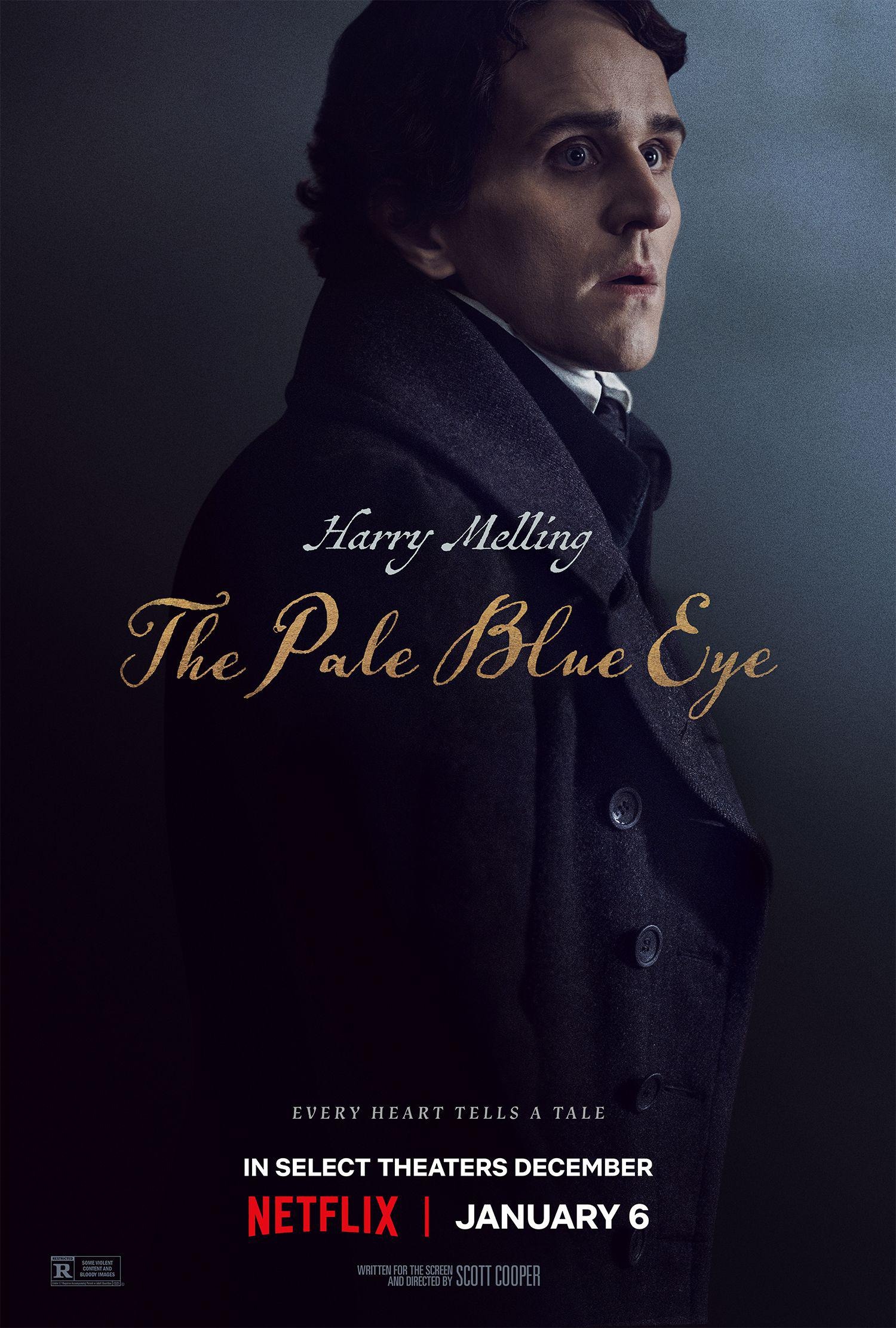
22 Dec The Pale Blue Eye
THE PALE BLUE EYE
dir. Scott Cooper, starring Christian Bale, Harry Melling, Lucy Boynton, and Toby Jones
The Pale Blue Eye, a thriller set in the 1800s from writer/director Scott Cooper, opens on a cadet at West Point whose body slowly turns as he dangles limp from the end of a noose on a fog filled night. With that opening visual to grab audiences, Cooper brings our players to the fore: the brilliant detective hired to solve the case, the eccentric young man he enlists to assist him, and the established stiff upper lip authority who disproves of the detective and his methods. Adapted from a 2003 novel written by Louis Bayard, The Pale Blue Eye doesn’t do much to enrich or enhance the murder mystery. Sadly, the film isn’t even the best example of subgenre to be released that day; Glass Onion takes that distinction, streaming on Netflix the same day this has its theatrical release.
The issues with The Pale Blue Eye are two-fold: the overall blandness of the story and how its presented, and Christian Bale’s performance. Scott Cooper, who seems to prefer slower, moodier type movies, does little to build the tension or convince the audience to care about the characters. While the big third act reveal may cause some viewers to want to rewind back to the first few scenes, that rewind has little in the way of reward outside of a respectful nod and a passing curiosity at what else is on the streamer. Though Cooper attempts to interject an element of the occult in this story, he fails to fully commit to it by the film’s end, making its overall inclusion more a passing fancy than an actual plot point. A simple story languidly told; a whodunit set in the 1800s with Edgar Allan Poe as one of the primary characters deserves better.
Starring Christian Bale, The Pale Blue Eye is his third collaboration with director Scott Cooper. Following Hostiles, a slow moving but gorgeous look at the American West, Bale returns to play Detective Agustus Landor, the man charged with solving the murder of the West Point cadet. Bale’s performance can be described as low energy, almost lackadaisical at time, seeming content to float through scenes with little real interest or passion. Outside of a scene in the second act as he gives a dressing down those in charge of the academy (which is quite good), Bale shows little life in this character. With grief at the heart of Landor’s backstory, Bale shows very little of it, happy to go through the motions rather than attack the character with the same zeal as we’ve seen from him in the past.
Thankfully, Bale’s muted screen presence is wildly overcompensated by Harry Melling as poet Edgar Allen Poe. As Poe, Melling turns in a captivating performance, clearly giving the role his all, and tackling flowery tongue-twisting prose with ease. The circles that Melling ran around all his acting partners in this film makes it seem like he’s in a completely different story than the rest of the cast, which both elevates and detracts from the overall product. Regardless, Melling is swinging for the fences with the role, and connects solidly in more than a few scenes.
Written, produced, and directed by Scott Cooper, The Pale Blue Eye works best when Cooper is letting the landscape do the storytelling. Impressive exterior establishing shots of a land blanketed by snow and untouched by the progress of time, Cooper displays an 1800s winter that would make the most hardened New York veteran cross their arms and draw inward. The production design, while not overly ostentatious, is still admirable; Cooper and team do an impressive job with nailing the aesthetics of the time, if nothing else. The fault lies in Cooper’s writing, not his direction. The story is a rote murder mystery with an attempt at a supernatural flair added in. Outside of Harry Melling’s performance, little is done to keep the audience engaged throughout the film’s two hour runtime, leading to a conclusion that while mildly surprising, doesn’t reach its full level of potential.
Overall, while at times visually interesting, The Pale Blue Eye pales in comparison to other thrillers of the year. With a last-minute twist that doesn’t manage to fully salvage the entirety of the story, Scott Cooper’s plodding narrative is perfect for those looking for some easy, low stakes material in the middle of the week after all other viewing obligations have been fulfilled. Harry Melling’s borderline melodramatics aren’t enough to carry Christian Bale’s lethargic performance across the finish line, making for an imbalanced tonal chemistry that permeates every scene they’re together in. The Pale Blue Eye hits theaters December 23rd and streams on Netflix starting January 6th.
Review by Darryl Mansel


No Comments